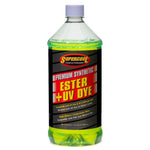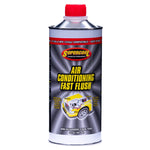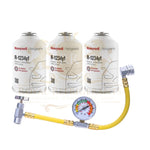You have no items in your shopping cart.
Everything You Need to Know About Vehicle A/C Refrigerant for HVAC and Automotive Applications
Have you ever wondered what makes your car’s air conditioner blow that crisp, cool air on a hot day? The answer lies in one key component — the vehicle A/C refrigerant.
Whether it’s your car’s air conditioning system or a home HVAC unit, refrigerant is the lifeblood of cooling technology. It absorbs heat, circulates through the system, and releases that heat outside, keeping you comfortable year-round.
In this article, we’ll break down everything you need to know about vehicle A/C refrigerants, how they work, the different types used today, and why modern systems are shifting toward more eco-friendly options.
What Is Vehicle A/C Refrigerant?
A vehicle A/C refrigerant is a specialized chemical compound that circulates through your car’s air conditioning system to absorb and remove heat from the cabin air.
Refrigerant operates in a closed-loop system, meaning it’s reused continuously — unless a leak occurs. It changes state from liquid to gas and back again to transfer heat efficiently from inside your vehicle to the outside environment.
How Vehicle A/C Refrigerant Works
Your car’s A/C system follows the same basic thermodynamic principles as any cooling system. Here’s a simplified breakdown:
-
Compression: The refrigerant gas is compressed by the A/C compressor, increasing pressure and temperature.
-
Condensation: The high-pressure gas flows into the condenser, where it cools and turns into a liquid.
-
Expansion: The liquid refrigerant passes through the expansion valve, where its pressure drops, cooling it further.
-
Evaporation: The cold refrigerant absorbs heat from the cabin air inside the evaporator coil — and voilà, cool air comes through your vents.
This process repeats continuously as long as your A/C is running.

Types of Vehicle A/C Refrigerants
Over the years, automotive refrigerants have evolved due to performance improvements and environmental regulations. Here’s a quick look at the most common types:
| Refrigerant Type | Common Use | Environmental Impact | Notes |
|---|---|---|---|
| R-12 (Freon-12) | Cars before 1995 | High Ozone Depletion Potential (ODP) | Banned globally |
| R-134a | 1995–2016 vehicles | Moderate Global Warming Potential (GWP) | Most common older car refrigerant |
| R-1234yf | 2017–present vehicles | Very Low GWP | Eco-friendly and now standard in new cars |
| R-744 (CO₂) | Premium & electric vehicles | Natural refrigerant | Highly efficient and sustainable |
💡 Tip: Always check your vehicle’s label or manual before recharging the A/C. Using the wrong refrigerant can damage the system and void your warranty.
Vehicle A/C Refrigerant vs. HVAC Refrigerant
While both automotive and HVAC systems use refrigerants to move heat, their design, pressure, and chemical composition differ significantly.
| Aspect | Vehicle A/C Systems | HVAC Systems |
|---|---|---|
| Common Refrigerants | R-134a, R-1234yf, R-744 | R-22, R-410A, R-32 |
| Operating Pressure | Higher (due to compact design) | Moderate and stable |
| System Type | Mobile, vibration-resistant | Stationary, larger coils |
| Cooling Capacity | Rapid, short-duration cooling | Continuous, large-space cooling |
Both share the same principle of heat transfer, but the materials, size, and refrigerant properties are tailored to their specific uses.
Signs Your Vehicle May Need Refrigerant Service
If your A/C isn’t performing as it should, you might be low on refrigerant. Here are common warning signs:
-
Weak or warm airflow
-
Compressor not engaging
-
Hissing or bubbling noise when A/C runs
-
Moisture or fog on interior windows
-
Oily residue around A/C lines or compressor
👉 Do not ignore these symptoms. Low refrigerant can lead to compressor damage, which is one of the costliest A/C repairs.
Environmental and Regulatory Changes
In the past, refrigerants like R-12 and R-22 were popular due to their efficiency. However, they were later found to damage the ozone layer. International agreements like the Montreal Protocol phased out these refrigerants worldwide.
Today, automakers are transitioning to low-GWP (Global Warming Potential) refrigerants such as R-1234yf and R-744, which are both efficient and environmentally friendly.
Eco-Friendly Alternatives: The Future of Cooling
The future of vehicle and HVAC refrigerants is focused on sustainability and energy efficiency. Some emerging alternatives include:
-
R-1234yf: Already standard in most new vehicles; 99% lower GWP than R-134a.
-
R-744 (CO₂): Used in luxury and EV models; natural, non-flammable, and ozone-safe.
-
R-32 and R-454B: Common in next-generation HVAC systems for improved efficiency.
These advancements represent a global shift toward cleaner, safer, and more sustainable cooling solutions.
Maintenance and Safety Tips
To keep your car’s A/C system performing efficiently:
Have your A/C inspected annually.
Avoid DIY refills unless you’re trained — overcharging can cause major damage.
Fix leaks immediately. Even small leaks reduce cooling and harm the environment.
Use certified refrigerants only. Avoid counterfeit or unverified products.
Check system pressure regularly if your car uses older refrigerants.
Conclusion
Your vehicle’s A/C refrigerant is the heart of the cooling system, ensuring comfort on every drive. Understanding how it works — and choosing the right, eco-friendly refrigerant — not only improves performance but also supports environmental protection.
As technology continues to advance, modern refrigerants are becoming more efficient, sustainable, and environmentally safe — shaping the future of both automotive and HVAC cooling systems.
 English
English







